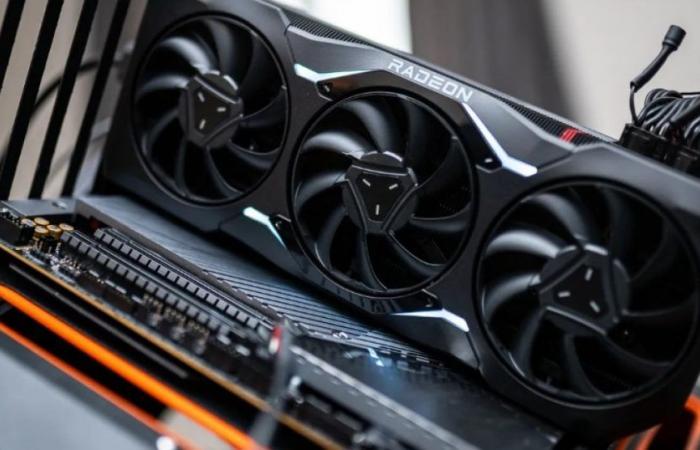An interesting AMD patent has just come to light, and although it was presented a while ago, finding it now is even more exciting because this technology could be closer to appearing in future graphics cards. The patent describes a multi-chiplet GPU with three separate dies, which is something that could improve performance and reduce production costs.
In the patent, AMD refers to a GPU that is divided into multiple dies, which it refers to as GPU chiplets. These chiplets, or dies, can operate together as a single GPU or function as multiple GPUs in what AMD calls “second mode.” The GPU has three modes in total, the first of which makes all the chiplets work together as a single unified GPU. This allows you to share resources and, as Tom’s Hardware says, allows the front-end array to deal with command scheduling for all shader engine sequences. This is similar to what a normal GPU without a chiplet would do.
The second mode is where it gets interesting. In this mode, each chiplet counts as an independent GPU. Each GPU handles its own task scheduling within its shader engines and does not interfere with the other chiplets. Finally, the third mode is a mix of the two, where some GPUs work as their own entity while others combine the chiplets to work together.
As mentioned, this patent is not new. It was introduced on December 8, 2022, just after AMD launched the RX 7900 XTX and RX 7900 XT. Although leakers have predicted that AMD could go the multi-chiplet route for at least a generation or two, this architecture is currently only really used in AMD’s data center GPUs. However, AMD has already dipped its toe into similar technology in RDNA 3, with a design that used a graphics compute die (GCD) and multiple memory cache dies (MCM) for the memory interface.
There are tangible benefits to switching to this type of architecture, according to the patent: “By dividing the GPU into multiple GPU chiplets, the processing system flexibly and cost-effectively configures a number of active GPU physical resources based on a functioning”. If it could be cheaper to produce these types of GPUs instead of using increasingly larger monolithic dies, we might start to see this design outside of the data center and on the GPUs we all use in our own computers.
Early leaks about the RDNA 4 graphics cards announced that AMD was going with a full multi-chiplet design, and it’s easy to imagine that the end result could have looked like what we see in the patent. However, with the news that AMD is sticking to mid-range graphics cards in this next generation, any hope of a multi-chiplet GPU seems lost for now. Maybe we’ll see this design come to life in RDNA 5.
Editor’s recommendations






